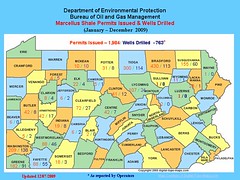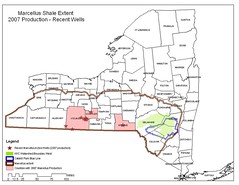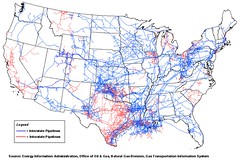-John Quigley, PA secretary of the Department of Conservation and Natural Resources
By JOEL KIRKLAND of ClimateWire
nytimes.com
PITTSBURGH -- Around suppertime on June 3 in Clearfield County, Pa., a geyser of natural gas and sludge began shooting out of a well called Punxsutawney Hunting Club 36. The toxic stew of gas, salt water, mud and chemicals went 75 feet into the air for 16 hours. Some of this mess seeped into a stream northeast of Pittsburgh.
Four days later, as authorities were cleaning up the debris in Pennsylvania, an explosion burned seven workers at a gas well on the site of an abandoned coal mine outside of Moundsville, W.Va., just southwest of Pittsburgh.
The back-to-back emergencies were like a five-alarm fire for John Hanger, secretary of the Pennsylvania Department of Environmental Protection. For a brief moment, the cable news channels turned their attention away from the BP PLC oil gusher in the Gulf of Mexico to the apparent trouble in the nation's expanding onshore natural gas fields.
The events added force to a tough public debate in Pennsylvania and New York and across northern Appalachia about how the environmental impacts of gas drilling balance against the economic benefits of gas and the role it could play in helping electric utilities transition to cleaner fuels.
When used to fire up a power plant, natural gas produces less air pollutants and half of the greenhouse gas emissions produced by conventional coal plants. But extracting the gas from deep sedimentary rock and shipping it to consumers is an industrial process. It requires massive amounts of water and reliable cement and pipe jobs. It also has wastewater-disposal issues and generates air pollution.
"This is a test for people in public life," Hanger says. "Do you get into public service to treat the gas industry fairly and protect our resources, or not? You don't have to choose between producing the gas and protecting our water."
The extent to which U.S. utilities will burn natural gas to slash carbon dioxide emissions tied to global warming is a national issue. But on the ground, where it's being produced, all politics is very local.
To continue reading, CLICK HERE.
DEMAND ACCOUNTABILITY!



















No comments:
Post a Comment